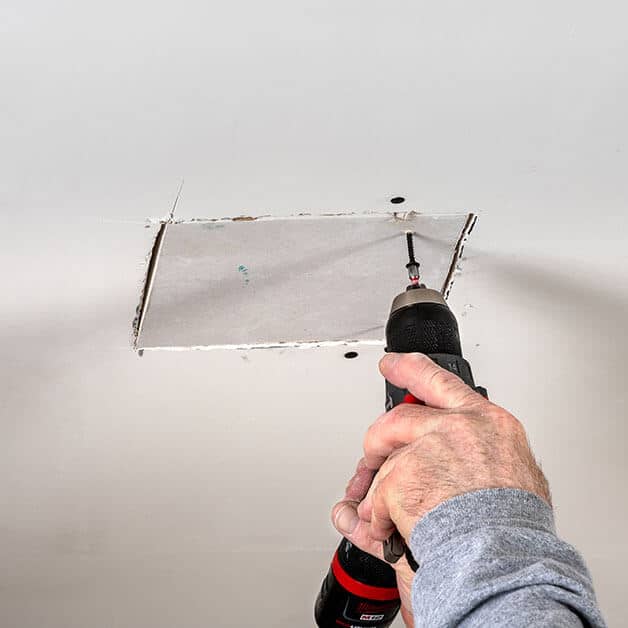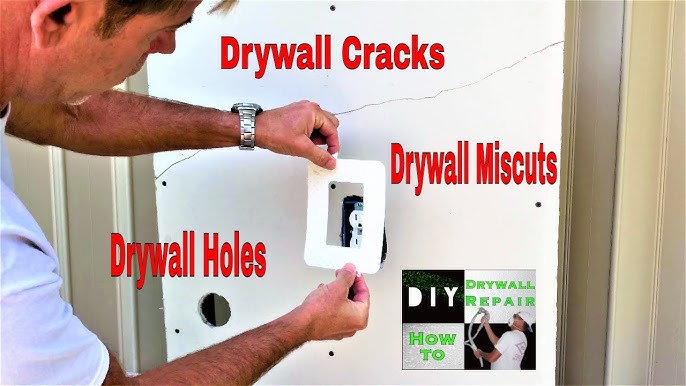Important Tips for Effective Drywall Repair Work and Installment Strategies
Reliable drywall repair service and installation calls for a careful strategy. Recognizing the kinds of drywall and having the right tools is crucial. Appropriate strategies and accurate measurements can considerably affect the result. Several overlook essential steps like taping and sanding, which can make or break the final look. As projects advance, typical challenges might occur that need interest. Discovering these tips can result in a more effective and refined finish.
Comprehending Various Sorts Of Drywall
Understanding the different kinds of drywall is important for any successful fixing or installment project. Drywall, typically referred to as plaster board, is available in numerous selections customized for certain applications. Criterion drywall is the most widely utilized type, perfect for general interior walls and ceilings. Moisture-resistant drywall, frequently environment-friendly in shade, is created for locations susceptible to humidity, such as washrooms and kitchens. Fire-resistant drywall, normally colored pink or purple, is crafted to stand up to greater temperatures and is typically utilized in garages or near heaters. In addition, soundproof drywall helps in reducing noise transmission, making it ideal for multi-family homes or recording studios. Specialty drywall, like concrete board, is made use of in damp areas like showers or tub borders. Understanding these types helps in picking the right material for each and every task, ensuring durability and effectiveness in repair services or brand-new installations.
Important Devices for Drywall Fixing and Installment
Having the right devices is necessary for reliable drywall repair work and setup. A top quality energy knife is vital for reducing drywall sheets precisely. A drywall T-square assists guarantee straight edges, while a taping knife is required for applying joint substance efficiently over joints. Additionally, a drywall saw permits reducing out harmed areas or suitable drywall around fixtures.
For hanging drywall, a power drill with drywall screws is vital, as it allows fast and secure setup. A level is additionally essential to confirm that the drywall is straight and properly aligned. A fining sand block or post sander is important for smoothing out joint compound once it has actually dried. A measuring tape is crucial for exact measurements, avoiding waste and ensuring a correct fit. Equipped with these devices, people can take on drywall tasks successfully, resulting in professional-looking outcomes.
Step-by-Step Overview to Repairing Holes and Cracks
When dealing with openings and cracks in drywall, having the right devices and products is important for an effective fixing. This overview describes the required items and provides a clear, step-by-step process to efficiently recover the surface. Understanding these components will assist assure a smooth surface and resilient outcomes.
Devices and Materials Needed
A well-equipped toolkit is crucial for efficient drywall repair service and installment. Key tools consist of an utility blade for cutting drywall, a tape action to assure accurate sizing, and a drywall saw for bigger holes. A putty blade is vital for applying joint substance smoothly, while a fining sand block or post sander aids accomplish a smooth surface. For patching, a roll of fiberglass mesh tape or paper tape is necessary to strengthen joints. Additionally, a drill and screws are needed for protecting brand-new drywall items. Vital products include joint substance, primer, and paint to finish the repair. Having these devices and materials handy assures a smoother, a lot more reliable fixing procedure, yielding professional-looking outcomes.
Repair Process Actions
Fixing openings and splits in drywall requires a methodical technique to guarantee a smooth finish. First, the location bordering the damage must be cleaned completely to remove dust and debris. Next, for tiny splits, a putty knife is used to apply a joint substance evenly over the location. For larger holes, a patch is needed; the harmed section is removed, and a new item of drywall is fitted in location, safeguarded with screws. Once the spot remains in setting, joint substance is put on blend the edges. After drying out, fining sand the area smooth is crucial. The repaired surface needs to be topped and painted to match the bordering wall surface, making certain an inconspicuous repair work.
Methods for Setting Up Drywall Panels
Installing drywall panels needs mindful preparation and specific execution to ensure a professional and smooth coating. Initially, it is vital to determine the wall surface area properly and reduce the panels to fit, guaranteeing that they align with the studs. Positioning the panels flat is usually suggested, as this can boost the architectural stability and lower the variety of seams.
Making use of drywall screws, installers must protect the panels every 16 inches along the studs, making sure a firm hold. It is vital to avoid overdriving the screws, which can harm the paper surface area. For edges and edges, using an energy blade permits tidy cuts and a tight fit.

Finishing Touches: Insulation, Mudding, and Sanding
Once the drywall panels are safely in position, the following essential action includes the complements of taping, mudding, and sanding. Taping is necessary for producing a smooth shift between panels and concealing joints. A high quality drywall tape, either paper or fiberglass mesh, ought to be used over the joints, guaranteeing it adheres properly to the mud that will certainly be applied next.
Mudding, or using joint compound, follows the taping process. This substance fills spaces and ravel the surface. A first coat should be applied generously, feathering the sides to blend with the drywall. After the preliminary coat dries out, succeeding layers might be needed for a perfect coating.
Sanding is needed to accomplish a smooth surface. A fine-grit sandpaper ought to be used to delicately smooth out any kind of imperfections. Care must be taken to prevent over-sanding, which can harm the drywall - drywall contractors. Properly implemented, these ending up touches produce a professional appearance ready for painting
Tips for Preserving Your Drywall After Setup
Keeping drywall after setup is vital to preserving its look and structural stability. Normal cleaning is essential; dust and dirt can gather, so mild cleaning with a damp cloth is advised. Home owners ought to additionally inspect for any kind of indicators of wetness or mold, especially check these guys out in high-humidity locations like washrooms and kitchens. If any damage happens, it is essential to resolve it immediately to stop further problems.
Making use of furniture pads can help avoid scratches or damages from hefty products. Furthermore, repainting the drywall with a high-grade, washable paint gives an additional layer of protection and makes future cleaning simpler. Avoid utilizing abrasive cleaners or devices, as these can harm the surface. Keeping a stable indoor climate with appropriate humidity levels will assist stop warping or fracturing over time. By complying with these suggestions, one can guarantee that drywall stays in superb problem for many years to come.
Frequently Asked Concerns
The Length Of Time Does Drywall Require To Fully Dry After Installation?

Can I Install Drywall Over Existing Drywall?
Yes, drywall can be installed over existing drywall, but it is vital to ensure the underlying surface is protected and sufficiently prepared. This technique can improve insulation and reduce installment time, though it may include weight.
What Is the Best Method to Soundproof Drywall?
The finest means to soundproof drywall includes utilizing specialized soundproofing products, such as durable channels, acoustic caulk, and sound-dampening drywall. These description methods properly decrease sound transmission in between spaces, boosting total acoustic performance in living spaces.
Just how Do I Choose the Right Drywall Thickness?
To choose the appropriate drywall density, consider the application and area. Requirement property walls typically make use of 1/2 inch, while ceilings or specialized areas may require 5/8 inch for find more added stamina and soundproofing capacities.
Exist Eco-Friendly Drywall Options Available?
Yes, eco-friendly drywall alternatives are readily available. These consist of products made from recycled products, plaster boards with reduced volatile organic compounds (VOCs), and those using sustainable manufacturing processes, using environmentally-conscious options for building and improvement projects.
Having the right tools is essential for efficient drywall repair service and installment. For hanging drywall, a power drill with drywall screws is indispensable, as it makes it possible for quick and safe and secure installation. Trick devices include an utility knife for cutting drywall, a tape step to ensure accurate sizing, and a drywall saw for larger holes. Yes, drywall can be set up over existing drywall, but it is essential to assure the underlying surface area is protected and sufficiently prepared. The ideal method to soundproof drywall involves using specialized soundproofing products, such as durable channels, acoustic caulk, and sound-dampening drywall.